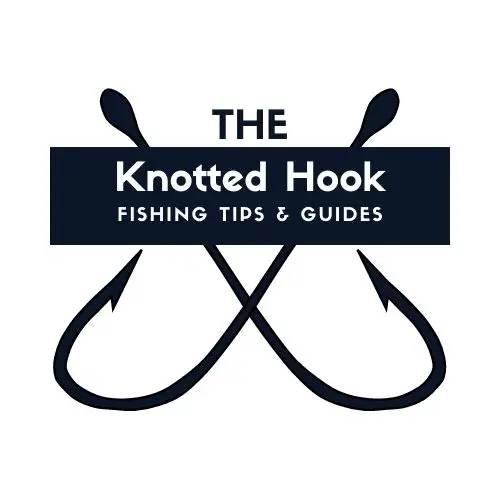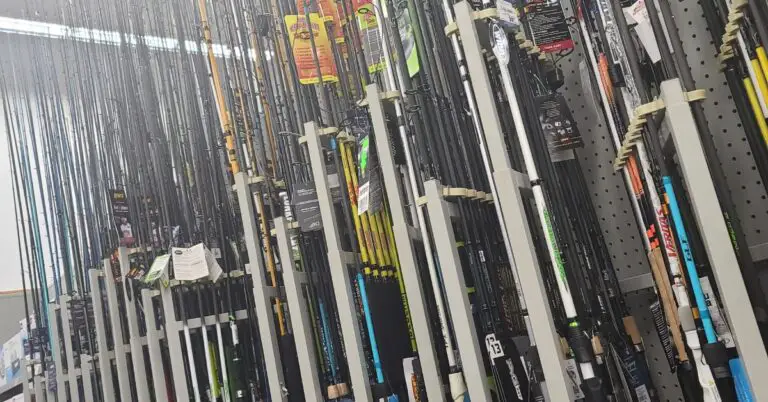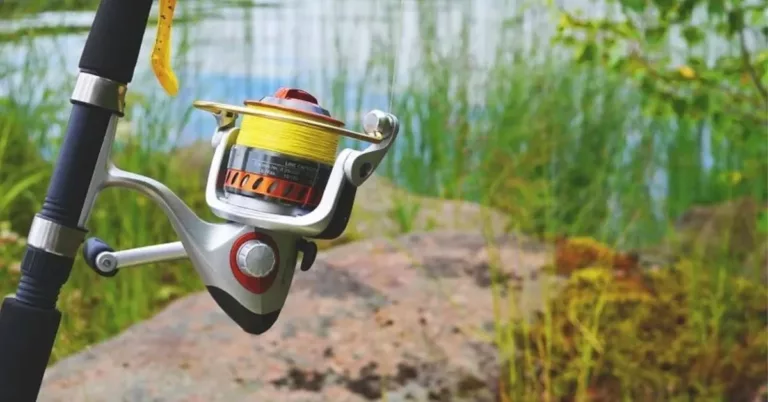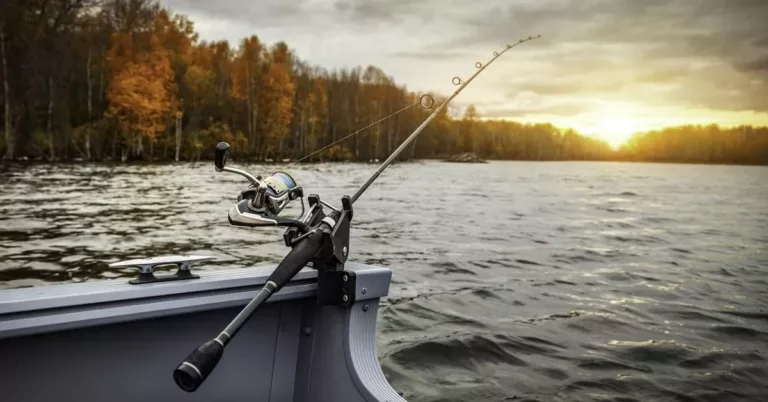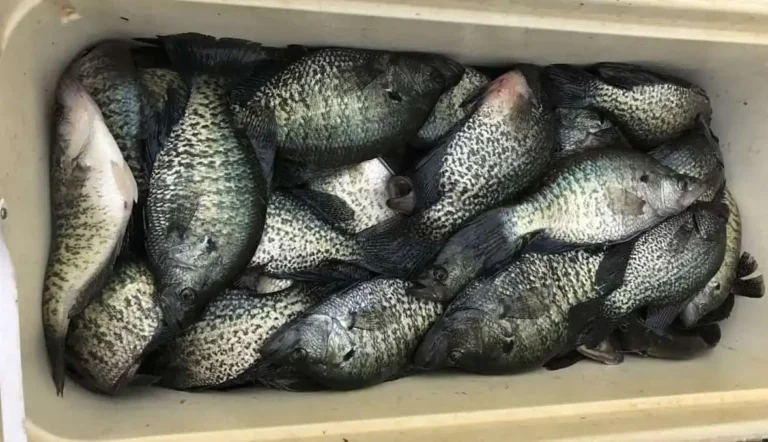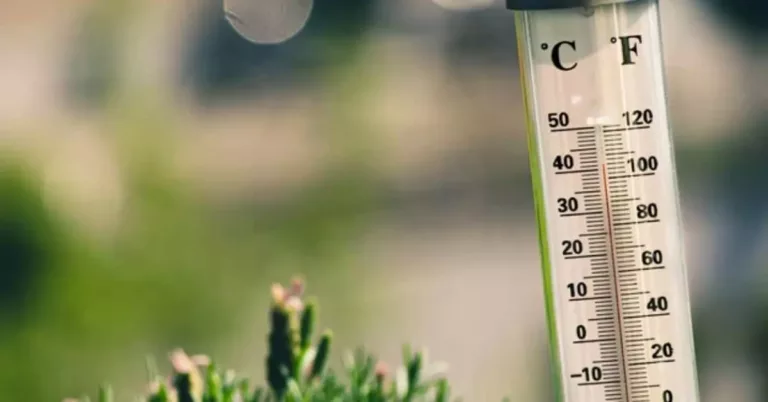Attention Crappie Anglers, Here’s What You Need to Know About Crappie Spawning

Almost anyone who has been fishing more than once, and even some that haven’t know that some of the best fishing of the year will be during the spawn.
So a brief introduction to the article,
Spawning is the time when most fish species females lay their eggs and they are in turn fertilized by the males. Most often this occurs in early spring when water temps reach about 60 degrees and for crappie at least, spawn lasts for 3 to 4 weeks. (1 for any individual female) Black Crappie tend to spawn before White.
Read on for more details in spawn times, water conditions, water clarity and how to determine when spawn is occurring among other details.
Beginner’s Guide to Crappie Fishing
Introduction: What is the Crappie Spawning Season?
Crappie spawning season is the time when crappies become active after the winter months. During this time, crappie will feed very aggressively and begin schooling in shallower waters where the females lay their eggs in nests or “beds” the males then fertilize these and defend them very aggressively.
Crappie beds are often found at depths ranging from 1 to 8 feet of water, and most often this depth is determined by water temperature and clarity of water. Clearer water will result in slightly deeper nests.
These Crappie beds are created by the male crappie rubbing their caudal fins(belly) on the ground and brushing the dirt and debris out of a clear circle area. These crappie spawning beds will have slightly raised sides which help to keep the eggs cradled in the center. Look for them near hardcovers like brush, docks and rocky outcrops.
Often these nests are visible from the surface if you search shallow coves around the edges of lakes.
For black crappie they can begin spawning when water temperatures reach 55 to 60 degrees. This is often in the months of February or March for southern states, but can be as late as June for some states located in the northern part of the country.
White crappie on the other hand will not spawn until the water temperature has reached 60 degrees. They can often be found near inlets of streams as the water in these areas tends to warm up slightly faster than that of the main lake body.
A final thought on the crappie spawn, is the light break, or point in which sunlight is able to penetrate the water. This is why the nests will be deeper in clear water. However, if it has frequently rained and the water is slightly muddy, then crappie will spawn as shallow as 6 inches to a foot in order to reach the necessary amount of sunlight.
As a matter of reference, once they are laid, the eggs will hatch at the earliest around 41 hours in warm water, and at the latest around 103 hours in cooler temperatures. The fry will then remain in the nest for 2 to 3 more days, while their egg sacs dissolve.
Tips for Bigger Crappie During Spawn
What many people may not realize is that just before and during the spawning time the males will be the primary fish located in these “spawning areas”. They arrive early and prep the beds once the eggs are laid they will fertilize them and then remain behind to guard the eggs and small fry once they hatch.
However, the females do not remain. They will come into the spawning area, lay their eggs and then retreat into slightly deeper water. These crappie are often slightly larger and will be holding just off the edge of the spawning beds.
They are often more than willing to snap up an easy meal if presented to them due to their need to replenish the energy required to lay their eggs.
Try for Deeper Crappie Beds
While the majority of crappie will spawn shallow, this is not always the case, in some lakes, especially those where the water fluctuates, try fishing a little deeper along the same ideal areas. Often larger crappie may build their nests slightly deeper in the water to combat the fluctuations in the water levels.
Use a Double Hook Pulled Across the Spawn Area
A double hook rig is an excellent choice for crappie fishing. Attach a 3/16 to 1/4 bell weight to the end of your line. 12 inches above that tie a small loop in the line and attach a hook by inserting the loop through the eye and then around the shaft. Do this again a foot above that line. This gives you a hook at 1 foot from the bottom and 1 at 2 foot from the bottom.
Bait with minnows and cast this along any brush, reeds, or grasses near the beds. This is likely to lure hiding crappie out from the cover and entice a strike. If you determine that they are holding deeper or shallower than this depth then you can use a larger float to lift this rig off of the bottom.
The weight at the bottom and the loops in the line will ensure the line remains straight, and the hooks are presented out from the line.
Vertical Jig in the Brush and Reeds for Spawn Catches
Vertical jigging with anything that resembles a minnow is another excellent tactic. I prefer to use a longer 10 foot rod for this as it allows me more control over where I am placing the jig in regards to the brush. Using a pole of this size allows me to reach away from the noise of a boat, or from the shore depending on where I am fishing.
Conclusion – Knowing When Spawn is Can Yield Monster Catches
In essence, by knowing the feeding habits or crappie during spawn and where to find them, you can bring in boat loads of crappie with relative ease. Their aggressive feeding during this time, coupled with their tendency to cluster together mean once you find one, others are sure to follow.
Remember to fish responsibly as crappie often return to the same spawning grounds and you don’t want to over fish any particular spawn. Unless your regulations say otherwise, I would take no more than 10 fish or so from any one spawn point.
So in summary;
The crappie spawn happens every spring between the months of February and June as the water temperatures reach 60 degrees and lasts around three weeks. During this time crappie lay their eggs in nests built on the bottom in shallow water. Fish around cover such as brush and docks using a minnow or jig for best results.
